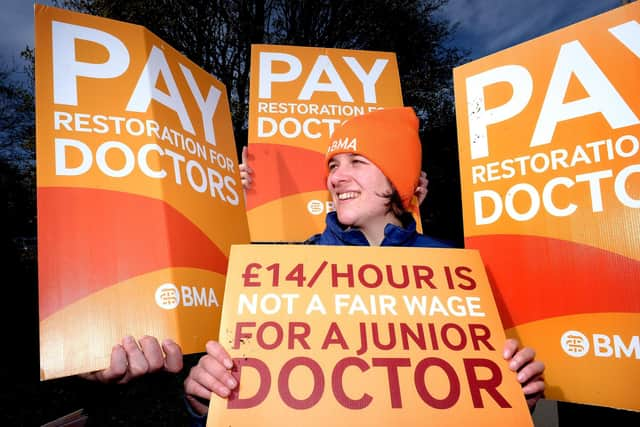Patients increasingly turning to A&E because of lack of GP availability
The Institute for Public Policy Research (IPPR) has surveyed GP patients and found that those in need of appointments are turning to accident and emergency departments for basic care needs.
According to the IPPR, in 2021 10% of patients who tried to see their GP in England were unable to secure appointments. In 2023 that number has increased to 16% of patients being unable to get appointments with GPs.
Advertisement
Hide AdAdvertisement
Hide AdAs a result, the number of people seeking primary care from emergency departments has more than doubled in the same period. Of those who couldn’t get an appointment with their GP in 2021, 7.6% - equivalent to 282,000 people - then went to A&E for treatment.


By 2023 the figure who went to A&E after failing to see their GP was 12.2% - roughly 696,000 people.
Responding to the latest stats on access to primary care and A&E usage, Dr Jamie O’Halloran, a senior research fellow on IPPR’s Commission on Health and Prosperity said: “The UK is getting sicker, poorer and more unequal. Primary care plays a vital role in healthcare provision and, at its best, is central to any aspiration to improve health and narrow inequalities.
“This new data shows that patients are finding it difficult to get GP appointments and are increasingly turning to already overstretched A&E departments to get care, particularly patients living in the most deprived parts of England.
Advertisement
Hide AdAdvertisement
Hide Ad“This will have significant health consequences, and in turn a hidden financial cost. The onset of sickness undermines both earned income and employment prospects.”
The analysis comes as junior doctors in England begin a five-day strike over real-terms pay cuts - their fourth since the dispute began.
NHS staff have been given a 6% pay rise by the government, while junior doctors will also receive a consolidated £1,250 increase, which prime minister Rishi Sunak described as the “final offer.”
Yesterday Mr Sunak called on the British Medical Association (BMA) - the union for doctors - to help “make the NHS strong again” and avoid further strikes.
Advertisement
Hide AdAdvertisement
Hide Ad“The Government has not only made today’s decision on pay. We’ve backed the NHS with record funding, delivered the first ever, fully funded long-term workforce plan and met the BMA’s number one ask of Government, with a pensions tax cut worth £1 billion.
“We should all ask ourselves, whether union leaders, or indeed political leaders, how can it be right to continue disruptive industrial action?
BMA chairman of council Professor Phil Banfield said: “This Government is driving doctors away from the NHS and this country; it needs to wake up and realise the true cost of keeping the expertise of doctors.
“Today, it missed a huge opportunity to put a credible proposal on the table to end strikes.
Advertisement
Hide AdAdvertisement
Hide Ad“This uplift still fails tens of thousands of frontline staff and is unlikely to do much to help retain a beleaguered, burnt out, undervalued workforce.”
Prof Banfield said consultants “remain willing to talk” but “they are likely to continue to take industrial action” as a result of the offer.
He also added that it was “highly likely” that other kinds of doctors represented by the BMA - GPs and specialty doctors - “will consider their next steps.”
Comment Guidelines
National World encourages reader discussion on our stories. User feedback, insights and back-and-forth exchanges add a rich layer of context to reporting. Please review our Community Guidelines before commenting.
